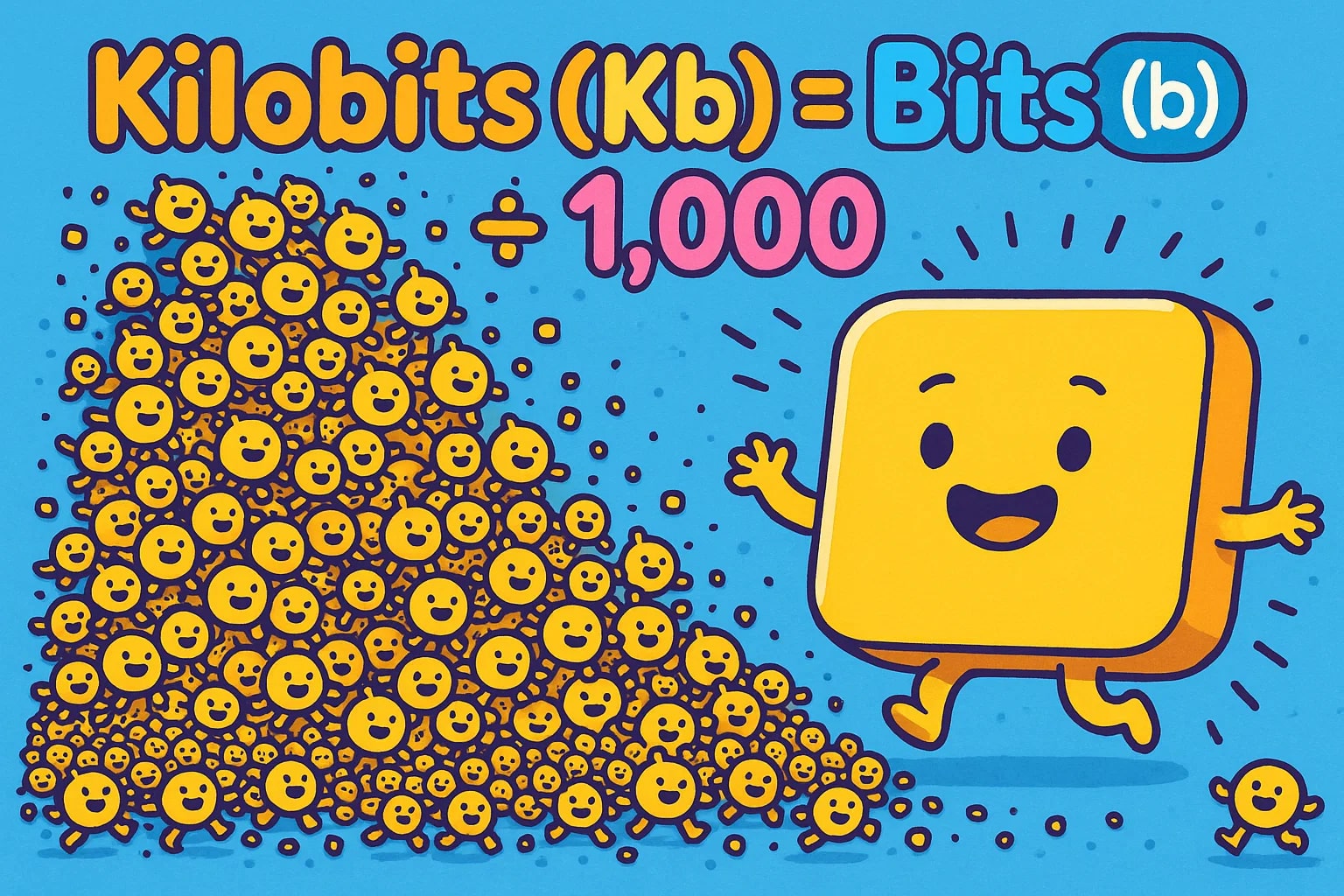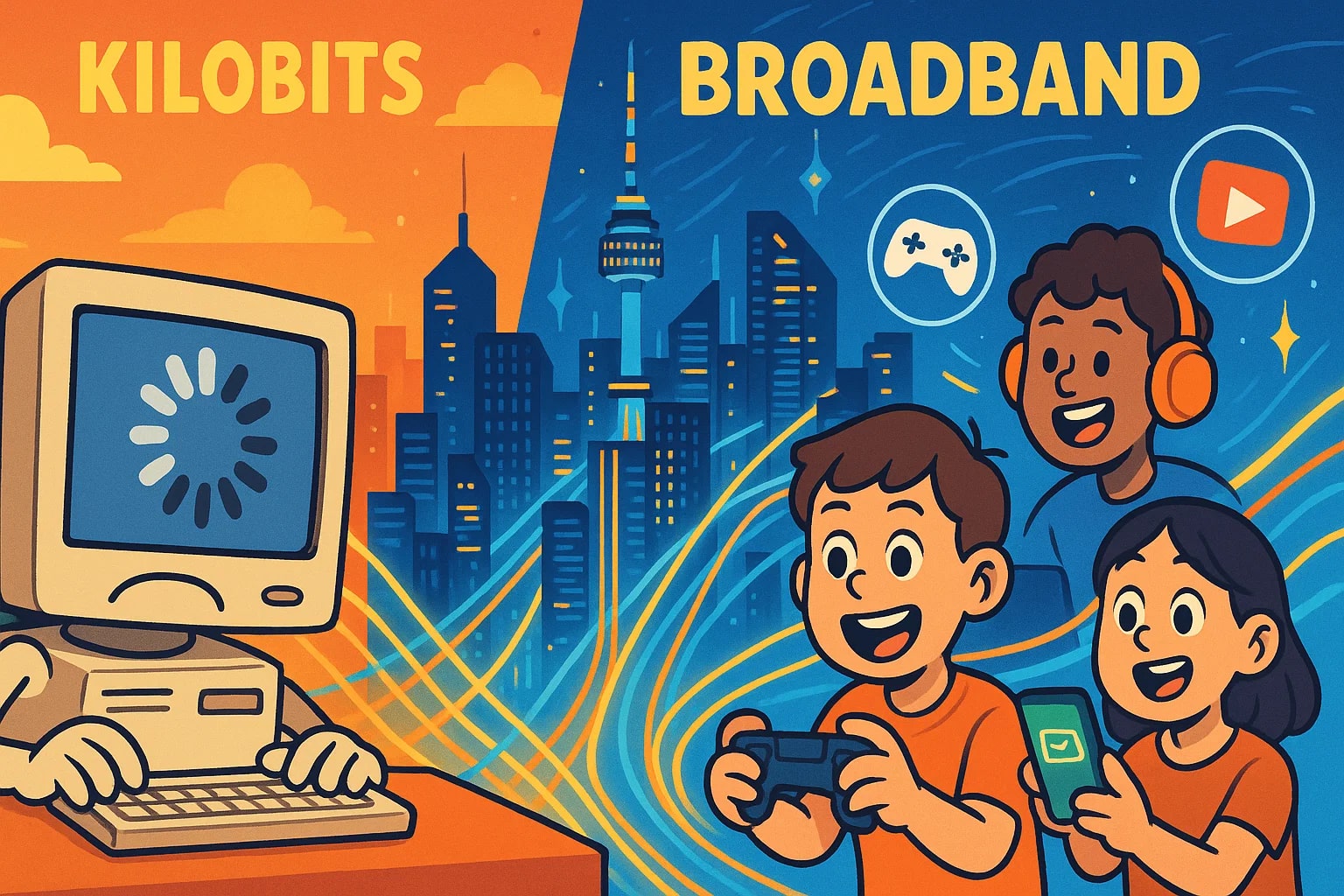Bit to Kilobit – How to convert b to Kb
Bits and kilobits appear everywhere — internet plans, file sizes, router dashboards — but converting between them can be tricky if you're not used to digital units. This guide keeps it simple. You’ll learn how the two compare, when they matter, and how one little letter ("K") changes everything.
The foundation of digital data
The bit, short for “binary digit,” is the smallest unit of information in computing. It's either a 0 or a 1, and nearly every form of digital technology is built from sequences of bits. Whether you’re loading a web page or sending a message, it starts at the bit level.
The term was introduced in 1948 by Claude Shannon in his influential paper on information theory. Today, bits are still used to measure bandwidth, encoding, and device communication.
How kilobits scale up the speed
A kilobit is equal to 1,000 bits — not 1,024 as it would be in binary systems for bytes. That’s because bits are often used in telecommunications, where the decimal system (powers of 10) is preferred.
You’ll often see kilobits in legacy internet metrics like “56 Kbps dial-up” or in voice transmission rates, such as VoIP streams running at 64 Kbps.
Kilobits help scale small but steady streams of data — especially when bytes (or even megabytes) would be too large for practical use in these systems.

Formula for converting bit to kilobit
Here’s the exact relationship:
Kilobits (Kb) = Bits (b) ÷ 1,000
Example:
If you have 24,000 bits, then:
24,000 ÷ 1,000 = 24 Kb
Try our Data Storage Converter or browse our full library of Conversion tools to simplify any measurement, digital or otherwise.
Did you know?
-
The first public dial-up internet services in the 1990s typically ran at 28.8 Kbps or 56 Kbps — meaning they transferred 28,800 to 56,000 bits every second. Today’s average broadband speed in the U.S. exceeds 250 Mbps (250,000 Kbps), nearly 9,000 times faster.
-
SMS text messages — introduced in 1992 — carry a maximum of 160 characters, totaling around 1,120 bits or roughly 1.1 Kb per message. That’s smaller than most icons on your phone’s home screen.
-
NASA’s Apollo missions used a data downlink speed of 1.024 Kbps to send telemetry from the spacecraft. That’s just over 1,000 bits per second — enough for system data, but not photos or video.
-
The classic MP3 audio format uses compression rates like 128 Kbps, meaning every second of music contains 128,000 bits. Audiophiles often prefer 320 Kbps or higher for richer sound.
When slow speed rewrote history
In 2003, the city of Seoul, South Korea, rolled out one of the world’s first citywide high-speed broadband networks. While the U.S. was still using DSL lines peaking at a few hundred kilobits per second, South Korean homes were already hitting multi-megabit speeds.
According to archived reports from the International Telecommunication Union, Seoul’s early investment in high-speed fiber created a digital gap that shaped global tech. South Korea quickly became a leader in online gaming, streaming, and digital payments — years ahead of the curve.
This shift pushed other nations to abandon slow kilobit-era networks and prioritize national broadband rollouts. It’s one of the clearest examples where moving beyond kilobits created an entire economy.

Final thoughts on bit to kilobit
Converting from bit to kilobit is a small calculation — just divide by 1,000 — but the impact of these units stretches far. Whether you’re checking bandwidth, comparing connection speeds, or reviewing legacy file formats, understanding this relationship puts digital data in context.
Need a quick conversion? Try our Data Storage Converter or browse our full library of Conversion tools to simplify any measurement, digital or otherwise.

